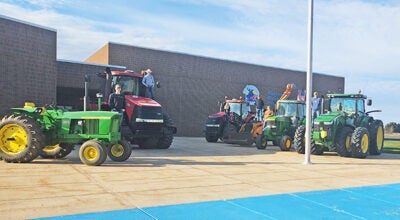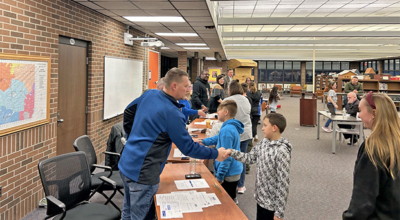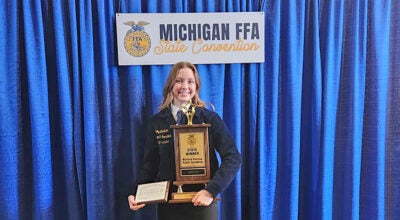Dear John/Remembering Ross Beatty
Published 3:31 pm Wednesday, November 21, 2012
Who was Ross Beatty for whom Cassopolis High School is named? Was he a prominent figure in the community?
— Rashena Johnson, Niles
I knew Ross Beatty before he was a building, but I only knew part of his story.
My dad was a Ranger. He used to take me to basketball games, where I cheered for the Chieftains, but secretly my favorite player wore blue-and-white.
Maybe you’ve heard of him. Bernard Thomas became a Dowagiac teacher, but also coached some football, guiding my alma mater to a state title in 1990.
To me as a kid, Ross Beatty was a gregarious guy with a cigar clamped in his teeth taking tickets at the door. He was athletic director, after all.
But I was blissfully unaware of his legendary 29 years teaching vocational agriculture, building a nationally renowned FFA program between 1944 and 1973 — including the nation’s best teacher in 1952 and Michigan’s best teacher in 1966.
In 1947 one of his students, Sam Stillson, was Michigan’s star farmer.
Cassopolis’ FFA success continues today under agriscience instructor and FFA adviser Carrie George.
When I covered school board, I remember seeing a case with his portrait in it, but it’s so crammed with trophies there’s no room for anything else, so I called on Carrie.
“At one time,” she said, “Cassopolis had the longest string of gold chapter awards at nationals than any other. That was their claim to fame. There was a program here before he came. He didn’t start FFA, but he built it.”
He was athletic director, co-op coordinator, “unofficial principal,” chief hall roamer, star latrine inspector and professional trainer of new principals.
Ross Beatty Day appeared to be somewhat of a roast, judging from the script.
I know from a story I did in 2010, the Niles graduate never participated in FFA herself.
She has taught plant and animal science since 1999 for Cassopolis, which at one point was the only agriscience program left in Cass or Berrien counties.
Carrie inherited Ross’s personal scrapbook, which reports on the FFA acquiring its 40-acre farm with barn more than 60 years ago.
There’s another 20 acres nearer the school.
I learned Ross went to the Kentucky Derby every year.
He was born in October 1904 in St. Louis and came to Cassopolis from Chicago.
There’s a Paul Harvey “Rest of the Story” moment when she tells me she was born in July 1973 — the same year Leah’s husband, 69, died Dec. 20, months after retiring.
He received a car from the community when he retired. I spot Bob Hayden and Frank Ham in one of the photos before the latter moved to Lexington, Ky.
There’s a photo from his funeral at St. Ann’s Catholic Church, the sidewalk lined with mourners as far as you can see. The account reported 2,000 attended.
He taught in less politically correct times. Much mention is made of a bull whip “he allegedly kept in his room and, on the first day of school, he cracked it a few times to get their attention.”
“He ruled with an iron fist. You didn’t mess with him,” Carrie said, setting up her punchline.
“He was definitely an interesting guy,” she said. “They allowed girls in FFA in 1969, but none were let in before he retired in ’73. If he knew there was a woman ag teacher, he’d probably be rolling in his grave.”






